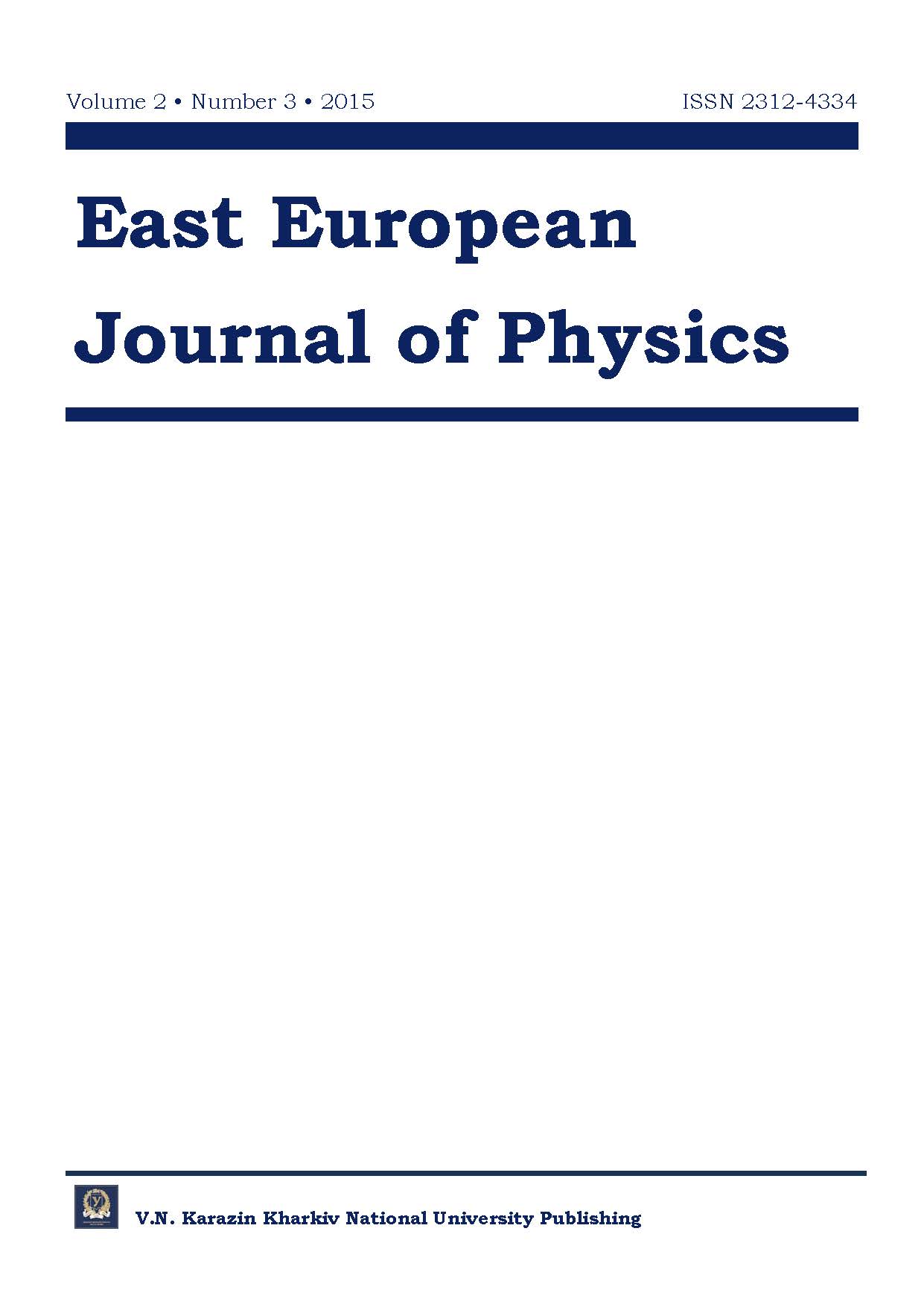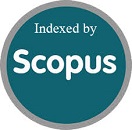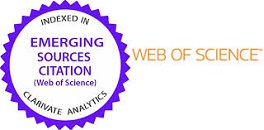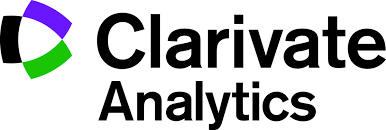PARTICLE DIFFUSION ACCELERATION IN SPATIALLY PERIODIC STRUCTURES EXPOSED TO RECTANGULAR TIME-PERIODIC FIELDS
Abstract
This scientific paper studies the abnormal diffusion of particles in spatially periodic structures exposed to the action of time –periodic rectangular fields. A choice of such a type of the field is related to the need of finding out physical reasons for an increase in the diffusion coefficient at different field amplitudes. As for the impact on the diffusion coefficient the entire eventual amplitude range was divided into three domains whose functional behavior of the diffusion coefficient differs with a change in temperature. It has been shown that the maximum increase in the diffusion can be reached only in the narrow amplitude range of the external periodic force defined by system dissipative properties. This range shows abnormal temperature relationship of the diffusion coefficient, in particular its exponential growth with a drop in temperature. A physical reason for such an abnormal increase in diffusion can be the availability of two populations of particles: “localized” and “running”. An optimal choice of the amplitude of the external field provides long jumps of running particles in comparison with localized ones. The amplification ratio of the diffusion can significantly be changed through the variation of the frequency and amplitude of the external field. This offers the challenge for new technological applications of studied effects.
Downloads
References
Costantini G., Marchesoni F. Threshold diffusion in a tilted washboard potential // Europhys. Lett. – 1999. – Vol.48. – P.491.
Hänggi P., Marchesoni F. Artificial Brownian motors: Controlling transport on the nanoscale // Rev. Mod. Phys. – 2009. – Vol. 81. – P. 337–442.
Sancho J.M., Lacasta A.M. The rich phenomenology of Brownian particles in nonlinear potential landscapes // Eur. Phys. J. Special Topics. – 2010.– Vol. 187.– P. 49–62.
Lacasta A.M., Sancho J.M., Romero A.H., Sokolov I.M., Lindenberg K. From subdiffusion to superdiffusion of particles on solid surfaces // Phys. Rev. – 2004. – Vol. E70. – P. 051104.
Risken H. The Fokker-Planck Equation and Methods of Solution and Applications (Springer) 1989.
Marchenko I.G., Marchenko I.I. Diffusion in the systems with low dissipation: Exponential growth with temperature drop // Europhisics Letters. – 2012. – Vol. 100. – P. 5005.
Marchenko I.G., Marchenko I.I. Anomalous temperature dependence of diffusion in crystals in time-periodic external fields // JETP Letters. – 2012. – Vol. 95, No. 3. – P. 137–142.
Lindenberg K., Sancho J.M., Lacasta A. M., Sokolov I.M. Dispersionless Transport in a Washboard Potential // Phys. Rev. Let. – 2007. – Vol. 98. – P. 020602. (4 pp.)
Кузнецов Д.Ф. Стохастические дифференциальные уравнения: теория и практика численного решения.– Санкт–Петербург: Из–во Политех. ун–та, 2007. – 800 c.
Sancho J.M., Lacasta A.M., Lindenberg K., Sokolov I.M., Romero A.H. Diffusion on a Solid Surface: Anomalous is Normal // Phys. Rev. Let. – 2004. – Vol. 92. – P. 250601. (4 pp.)
Siegle P., Goychuk I., Hanggi P. Origin of Hyperdiffusion in Generalized Brownian Motion // Phys. Rev. Lett. – 2010. –
Vol.105. – P.100602 (4 pp.)
Зеленый Л.М., Милованов А.В. Фрактальная топология и странная кинетика: от теории перколяции к проблемам
космической электродинамики // УФН. – 2004. – Т. 174. – No.8. – С. 809–852.
Marchenko I.G., Marchenko I.I. Abnormal surface diffusion of particles under the action of an external time-periodic force // Journal of Physics: Conf. Ser.– 2014.– Vol. 514. – P. 012045 (1–5).
Marchenko I.G., Marchenko I.I. Particle transport in space-periodic potentials in under-damped systems// European Physical Journal B. – 2014.– Vol. 87.– P. 10 (7 pp.).
Bruch L.W., Diehl R.D., Venables J.A. Progress in the measurement and modeling of physisorbed layers // Rev. Mod. Phys.– 2007.– Vol. 79.– P. 1381– 1454.
Krim J. Friction and energy dissipation mechanisms in adsorbed molecules and molecularly thin films // Advances in Physics.– 2012.– Vol. 61. – No. 3.– P. 155–323.
Authors who publish with this journal agree to the following terms:
- Authors retain copyright and grant the journal right of first publication with the work simultaneously licensed under a Creative Commons Attribution License that allows others to share the work with an acknowledgment of the work's authorship and initial publication in this journal.
- Authors are able to enter into separate, additional contractual arrangements for the non-exclusive distribution of the journal's published version of the work (e.g., post it to an institutional repository or publish it in a book), with an acknowledgment of its initial publication in this journal.
- Authors are permitted and encouraged to post their work online (e.g., in institutional repositories or on their website) prior to and during the submission process, as it can lead to productive exchanges, as well as earlier and greater citation of published work (See The Effect of Open Access).








